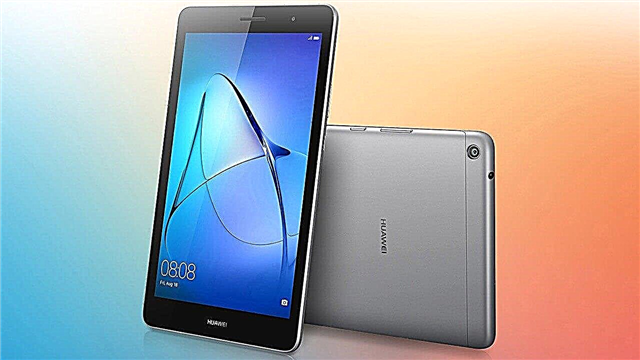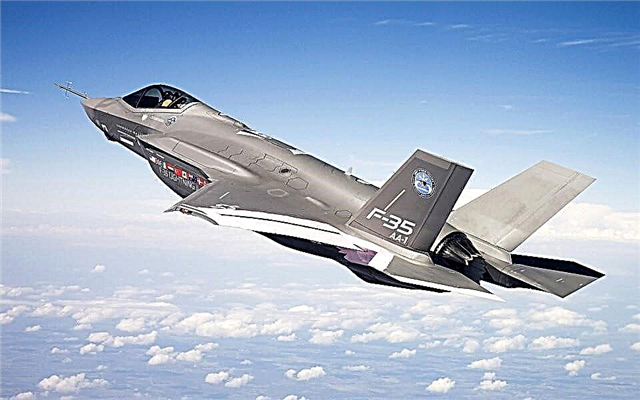No other component has such an impact on computer performance in games as a video card. This is the heart of a modern computer, especially gaming. Of course, there are chances that those reading these lines are mining, working as designers and (or) rendering high-quality video, but most buy powerful video cards for games.
Video cards eat up most of the budget allocated for the purchase or assembly of a new computer. Although after the entry of the new generation cards from Nvidia GeForce RTX 2080 and RTX 2080 Ti onto the market, the previous generation got a little cheaper - there is an opportunity to snatch a good and powerful video card at an affordable price. What is the best way to spend money - we will give an answer to this in graphics card performance rating of 2018. It is compiled taking into account the opinions of experts from reputable foreign publications -PCGamer and PCWorld.
10. Nvidia GeForce GTX 1050 2 GB
 Average price: 10 000 rub.
Average price: 10 000 rub.
- 2048 MB GDDR5 VRAM
- core / memory frequency: 1392/7008 MHz
- DVI, HDMI, DisplayPort
- support for DirectX 12, OpenGL 4.5, Vulkan
- work with 4 monitors
This video card can be safely recommended to those who are just starting to play games, and at the same time do not want to spend extra money. She will easily pull the 20 best games in history. A great choice for cyber athletes for whom advanced graphic effects are not important, but speed and high FPS are important. The card can provide both that and another - it calmly holds 100 FPS in games like Dota 2, Overwatch, CS: GO and so on. More demanding "story" games, it will pull at 60 fps with a resolution of 1080 and medium settings. On ultra-settings, there will be FPS 30 on the strength (which, however, is hardly noticeable to the human eye, so see for yourself).
Another plus of the card is its size. It is small, you can install it in almost any building. And it works very quietly, and under load it heats up to a maximum of 65 degrees.
Cons: poor overclocking potential, a small amount of video memory.
9. AMD Radeon RX 560 4 GB
 Average price: 11 000 rub.
Average price: 11 000 rub.
- 4096 MB GDDR5 VRAM
- core / memory frequency: 1275/7000 MHz
- SLI / CrossFire support
- DVI, HDMI, DisplayPort
- support for DirectX 12, OpenGL 4.5, Vulkan
- work with 3 monitors
The main advantage of the RX 560 is its price. The video card is very budgetary, but it is capable of producing a good picture and at the same time quite nimble at 1080 resolution (various competitive games specialize in this segment). If you need a computer for games like CS: GO, Lol, Overwatch, and so on, and don’t want to spend a lot of money, then the RX 560 is a good choice. It can easily withstand 60 FPS with average settings, and the card at this price is not required.
Cons: the fan is very noisy at maximum speeds, the video card heats up to 70 degrees under load.
8. AMD Radeon RX 570 4 GB
 Average price: 15 000 rub.
Average price: 15 000 rub.
- 4096 MB GDDR5 VRAM
- core / memory frequency: 1340/7000 MHz
- SLI / CrossFire support
- DVI, HDMI, DisplayPort x2
- support for DirectX 12, OpenGL 4.5, Vulkan
- work with 5 monitors
The main advantage of budget cards from Radeon from similar Nvidia is a slightly higher performance in games that support DirectX 12. In general, a card with Polaris architecture slightly differs from 1060 with 3 GB of video memory. Unless it consumes a little more electricity, it warms a little more and makes a little more noise. In general, the choice is excellent if you play at 1080 resolution - the card is able to provide a picture of 60 fps at high settings, which in principle is more than enough for most current games.
Alas, AMD cards are inevitably a thing of the past, especially against the backdrop of the recent recent developments from Nvidia - 2080 and 2080 Ti. A company needs to find something better than Polaris in order to be able to at least catch up with the main manufacturer of graphics processors.
7. Nvidia GeForce GTX 1060 6 GB
 Average price: 22 000 rub.
Average price: 22 000 rub.
- 6144 MB GDDR5 VRAM
- core / memory frequency: 1506/8008 MHz
- DVI, HDMI, DisplayPort x2
- support for DirectX 12, OpenGL 4.5, Vulkan
- work with 4 monitors
The main competitor is the Radeon RX 580. The difference between them of 2 GB often does not have a big impact on gaming performance, especially if the resolution is 1080. It is with it that the seventh and sixth places in the rating show themselves best. Of course, they can stretch 1440, but you have to sacrifice the quality of the textures.
The advantage of 1060 over its competitor is energy consumption; this model uses somewhere 50 W less than the RX 580. This means that it heats up less and is quieter in operation - these two qualities cost clearly more than a hundred rubles saved.
Cons: unless a small radiator. However, no one can call this video card a “stove”.
6. AMD Radeon RX 580 8 GB
 Average price: 19 000 rub.
Average price: 19 000 rub.
- 8192 MB GDDR5 VRAM
- core / memory frequency: 1365/8000 MHz
- SLI / CrossFire support
- DVI, HDMI, DisplayPort x3
- support for DirectX 12, OpenGL 4.5, Vulkan
- work with 5 monitors
The same workhorse that will take everything on itself (although not at maximum settings). Many of us dream of powerful graphics cards that can produce impressive numbers and track every speck of dust in a pillar of sunlight, but reality (and budget) makes its own brutal corrections. Therefore, if you are limited in funds, choose the RX 580 with 8 GB of video memory for maximum video card efficiency.
In terms of performance, the RX 580 8GB is approximately equal to the GTX 1060 6GB - a little more performance is bought up with a little more power consumption. Which of them wins the market depends primarily on the price. It is worth considering that it is quite difficult to distinguish ultra-textures from just high-quality textures on an untrained eye on a monitor with a resolution of 1080.
Cons: unless power consumption. And then if you really really want to find fault with something.
5. AMD Radeon RX Vega 56 8 GB
 Average price: 40 000 rub.
Average price: 40 000 rub.
- 8192 MB HBM2 VRAM
- core / memory frequency: 1170/1600 MHz
- SLI / CrossFire support
- HDMI, DisplayPort x3
- support for DirectX 12, OpenGL 4.5, Vulkan
- work with 6 monitors
AMD GPUs managed to get only to fifth place in the top of video cards of 2018. Once this card was eagerly awaited, but it did not meet expectations. We hoped for the “Nvidia killer”, but got a card comparable to the GTX 1080 one year ago (then). However, the RX Vega 56 is about the same in performance, costs a little less, a little more economical, and its performance is comparable to the GTX 1070 Ti. For the price it costs about the same or a little more expensive (depending on configuration). And in some games that support DirectX 12, it performs even better than the alternatives from Nvidia.
It is hoped that in the future AMD will squeeze the king - or at least shake the throne well. The more competition in the market, the better for us, ordinary users.
Cons: overpriced, non-optimal BIOS setup.
4. Nvidia GeForce GTX 1070 Ti
 Average price: 30 000 rub.
Average price: 30 000 rub.
- 8008 MB GDDR5 VRAM
- core / memory frequency: 1607/8192 MHz
- SLI / CrossFire support
- DVI, HDMI, DisplayPort x3
- support for DirectX 12, OpenGL 4.6, Vulkan
- work with 4 monitors
The best graphics cards are not necessarily the most powerful or the cheapest. The best ones are those that represent the optimal balance of price / performance / quality. In the ranking of video cards in 2018, there are many good options. However, if your goal is to find a graphics processor that can easily stand the next couple of years without a change and do not need to sell a kidney or lay your mother’s dacha, then it's time to think about the GTX 1070 Ti. In terms of performance, it is somewhere between 1070 and 1080, but at a price closer to the previous one.
In addition to the price, the 1070 Ti also has other advantages. It is easily overclockable, quiet, efficient, and capable of delivering more than 60 fps in games with a resolution of 1080 or even 1440 on ultra-settings. After the bitcoin boom, from which ordinary gamers primarily suffered, prices continue to decline. Plus, in October, the RTX 2070 is still expected, perhaps prices will fall even more. This video card can be safely recommended to most gamers.
Cons: noisy and pretty hot.
3. Nvidia GeForce GTX 1080 Ti
 Average price: 57 000 rub.
Average price: 57 000 rub.
- 11264 MB GDDR5X video memory
- core / memory frequency: 1493/11010 MHz
- SLI / CrossFire support
- DVI, HDMI, DisplayPort x2
- support for DirectX 12, OpenGL 4.5, Vulkan
- work with 4 monitors
The previous flagship from Nvidia is still good, its performance is also high, but the price (not least) has become less. The card is best combined with a monitor capable of issuing a resolution of at least 1440 - so it can reveal its full potential. Compared to its competitors, it performs almost at the level of 2080, however, it does not have all its newfangled things - ray tracing and DLSS-smoothing. But already 25 new games have sworn that they will support DLSS, and 11 - ray tracing. In general, upgrading from 1080 Ti to 2080 does not make sense, but about 2080 Ti it is worth thinking carefully.
Cons: expensive.
2. Nvidia GeForce RTX 2080
 Average price: 60 000 rub.
Average price: 60 000 rub.
- 8192 MB GDDR6 VRAM
- SLI / CrossFire support
- HDMI, DisplayPort x3, USB Type-C
- support for DirectX 12, OpenGL 4.6, Vulkan
- work with 4 monitors
The best graphics card with the largest number of gadgets (which gamers may or may not need) takes the first place in the rating. However, the second place is also worthy of attention, because at the moment it is one of the fastest GPUs. And it costs a little cheaper (although not too much).
If instead of a super-duper-top video card you just want to buy 2080 without any additional letters, you will get excellent performance (it is higher than that of the previous flagship, GTX 1080 Ti) and save about 30,000. And RTX 2080 can also trace rays and smooth in DLSS mode, like its advanced version. The difference in productivity between them is approximately 10-15%. By the way, the RTX 2080 costs about the same as the 1080 Ti, and they are approximately equal in performance in games without ray tracing and DLSS.
Minus: like the flagship, the RTX 2080 is ahead of its time, because not many, even the most anticipated games can boast of ray tracing and DLSS smoothing. Shadow of the Tomb Raider and Battlefield 5 should be released soon - and there we’ll see how the new product will show itself.
1. Nvidia GeForce RTX 2080 Ti
 Average price: 100 000 rub.
Average price: 100 000 rub.
- 11264 MB GDDR6 VRAM
- core / memory frequency: 1650/14000 MHz
- SLI / CrossFire support
- HDMI, DisplayPort x3, USB Type-C
- support for DirectX 12, OpenGL 4.6, Vulkan
- work with 4 monitors
The most powerful graphics card rating. She breaks productivity records and takes an honorable first place in the ranking of Nvidia video cards and not only. If you are a gamer and want to enjoy the spectacle of playing in the dew drops of sunlight in 4K resolution and on four monitors at once, then this video card is for you.
 Nvidia GeForce RTX 2080 Ti - the latest development of the company, interesting in that it is not only the most powerful, but also the largest in size. An additional amount was required to increase the number of CUDA cores, the introduction of tensor cores and the new type of DLSS smoothing provided by them, as well as the RT cores needed for improved sun ray tracing. In addition to the above, the Nvidia GeForce RTX 2080 Ti boasts a number of innovations - for example, this is the only card that can currently optimally interact with the G-Sync HDR display in 144 Hz and a resolution of 4k.
Nvidia GeForce RTX 2080 Ti - the latest development of the company, interesting in that it is not only the most powerful, but also the largest in size. An additional amount was required to increase the number of CUDA cores, the introduction of tensor cores and the new type of DLSS smoothing provided by them, as well as the RT cores needed for improved sun ray tracing. In addition to the above, the Nvidia GeForce RTX 2080 Ti boasts a number of innovations - for example, this is the only card that can currently optimally interact with the G-Sync HDR display in 144 Hz and a resolution of 4k.
 The card is indispensable for those who want the best, the most powerful and can afford it. If this someone else won the lottery, he can buy a second card, then connect them using the NVLink connector and enjoy the spectacle of the FPS values taking off into space. Another positive point - it is unlikely that in the next year and a half Nvidia will be born a new flagship, so this card will serve at least such a period.
The card is indispensable for those who want the best, the most powerful and can afford it. If this someone else won the lottery, he can buy a second card, then connect them using the NVLink connector and enjoy the spectacle of the FPS values taking off into space. Another positive point - it is unlikely that in the next year and a half Nvidia will be born a new flagship, so this card will serve at least such a period.
The negative moment - there are currently not many ray tracing games on the market that support DLSS smoothing. Plus, the card has two fans and one evaporation chamber, and they all make noise, albeit not too loudly.












